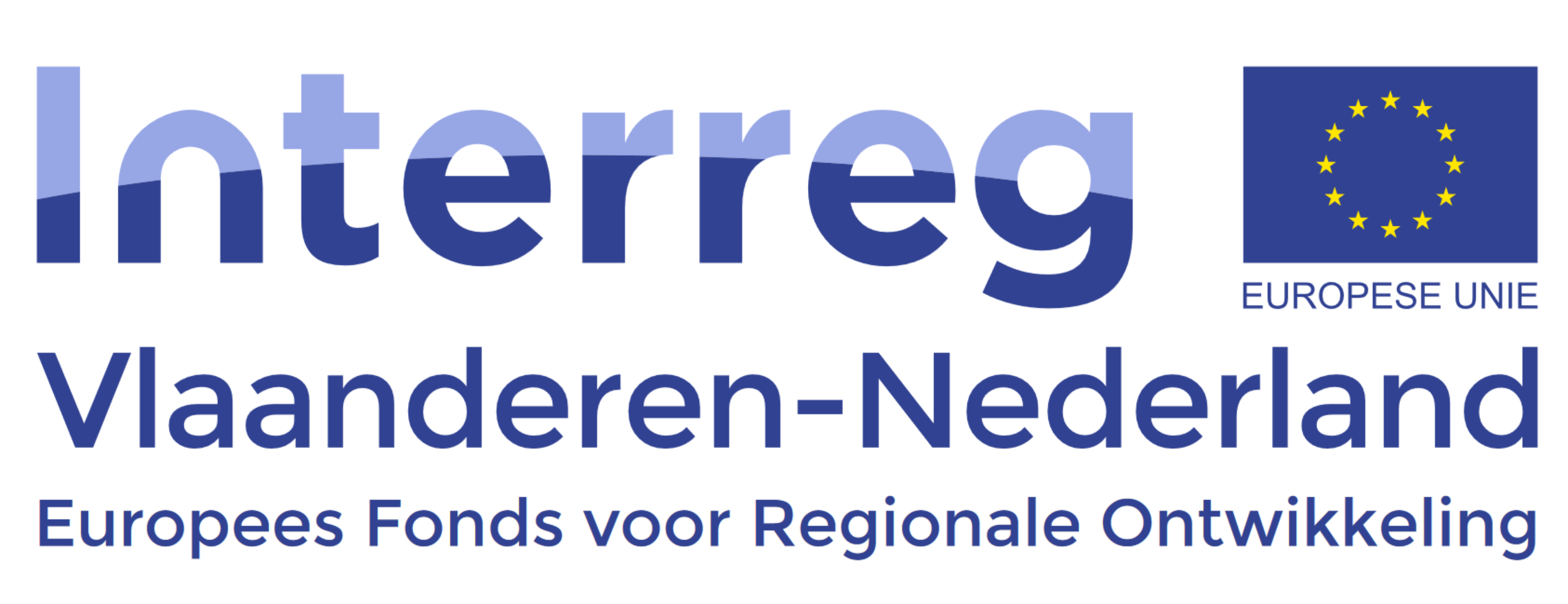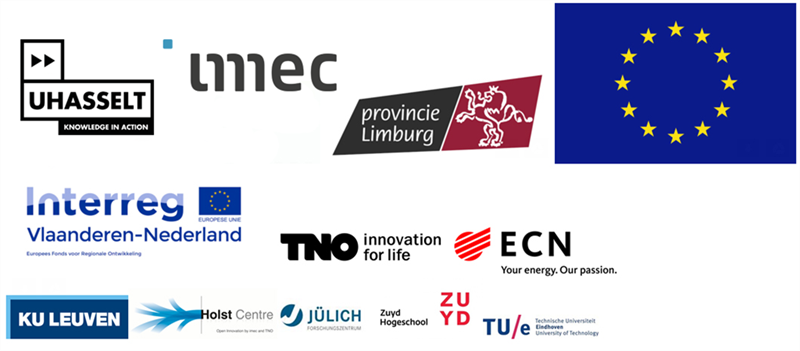PV OpMaat
PV OpMaat is a regional consortium of eight knowledge partners who are working together on the development and demonstration of building elements that generate electricity from sunlight. It is being investigated how customised, coloured or transparent PV elements can be fully integrated into building components.



This project is being carried out with a contribution from the European programme Interreg V Flanders-Netherlands, which promotes innovation, sustainable energy, a healthy environment and the labour market through cross-border projects.
MAKING INTEGRATION OF SOLAR PANELS IN BUILDINGS MORE EFFICIENT, MORE AESTHETIC AND CHEAPER
The Interreg project PV OpMaat is a regional consortium of eight knowledge partners who are working together on the development and demonstration of building elements that generate electricity from sunlight. The collaborative project, which runs until 2018, has a budget of EUR 7 million and is implemented under the Interreg Flanders-Netherlands Cooperation Programme, with financial support from the European Regional Development Fund, the provinces of North Brabant, Flemish Brabant, Flemish and Dutch Limburg, the Dutch Ministry of Economic Affairs, and the Ministry of North Rhine-Westphalia.
Research is being done into how customised, coloured or transparent PV elements can be fully integrated into building components.
In addition to the project coordinator TNO, ECN, IMEC, Holst Centre, ForschungsZentrum Jülich, the universities of Eindhoven, Hasselt and Leuven, and ZUYD University of Applied Sciences are all participants.
PV OP MAAT
Current solar panels are mass-produced in the form of rectangular panels with a standard size chosen by the manufacturer. For use on roofs and façades, these standard panels are added to the building at a later stage.
The aim of the project is to demonstrate, on the basis of newly developed methods, the producibility of power-producing thin-film PV solar cell materials and to produce them in such a way that they can be optimally integrated into building elements such as roofs, windows, conservatories and façade panels. Especially thin film solar cell materials can be produced directly on building materials (glass, metal, plastic), and within Solliance new technology is being developed to shape mass-produced thin film solar cell materials into tailor-made modules on customer demand. These solar cell materials can also be made in various colours or translucent.
To this end, demonstrators will be manufactured in cooperation with companies, which will be tested at test sites within the project and compared to current standard technology.
This development is a prelude to increasingly large-scale application of aesthetically pleasing PV for power generation in the built environment.
Examples of such products are already on the market, but the ambition to make the production adaptable to specific desired dimensions in the construction industry is new and responds to the growing market for renovating and making homes and buildings energy efficient in response to public policy.
The project is implemented by:
- Solliance, the public-private partnership of companies and knowledge institutes that focuses on the development of thin film solar cells
- SEAC in the Netherlands, the independent centre for the application of solar energy systems
- The Flemish EnergyVille, the energy centre for sustainable energy and intelligent energy systems.
CROSS-BORDER COOPERATION ACCORDING TO THE PRINCIPLE OF OPEN INNOVATION
TNO is one of the partners in the Solliance Public Private Partnership, and acts on behalf of Solliance as project coordinator and co-initiator of PV OpMaat. Apart from Solliance partners ECN, IMEC (B), FZ Jülich (D), TU/e, and Hasselt University (B), also ZUYD and KU Leuven (B) participate. Furthermore, Solliance cooperates with suppliers, PV producers and integrators, construction companies and end-users, knowledge and educational institutes and the private sector.
Cofinancers

Contact
prof. dr. ir. Michaël Daenen

dr. Lieve De Doncker

